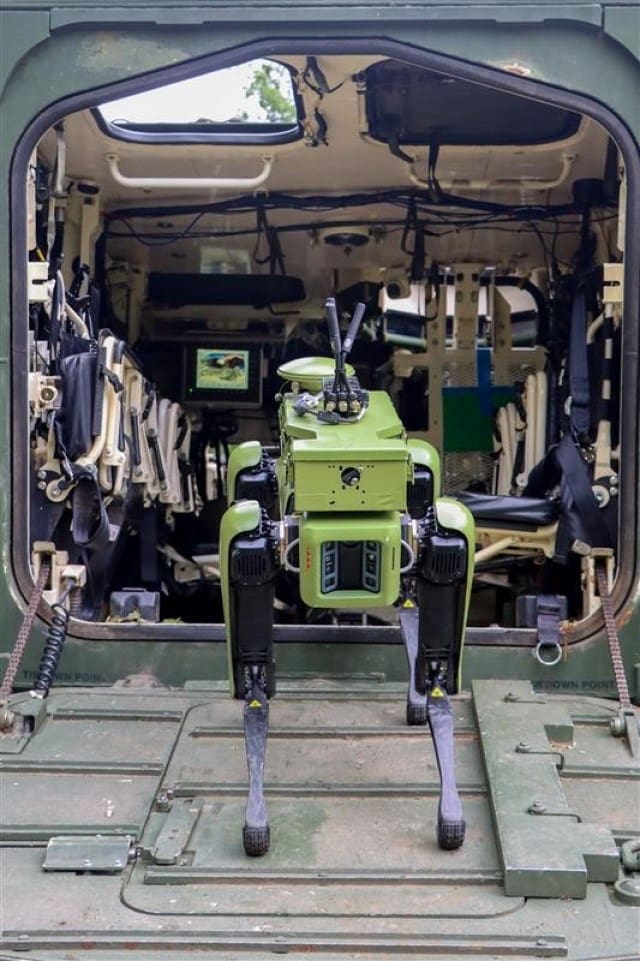
WASHINGTON— The U.S. Army xTech Program, in coordination with the Joint Humanoid Community of Collaboration, launched the xTechHumanoid competition. With up to $490,000 in cash prizes and $1.25 million in potential follow-on awards, the competition seeks transformative humanoid technologies that enhance warfighter survivability, sustain combat power, and operate effectively in complex, high-risk environments.
xTechHumanoid aims to identify and accelerate the development of prototype militarized humanoids capable of working alongside Soldiers in diverse operational settings. The competition will assess the current state of humanoid technology and evaluate key subsystems—such as artificial intelligence, sensors, and power systems—to identify scalable commercial solutions with near-, mid-, and long-term potential.
Finalists will participate in a live experimentation event with Department of Defense experts and end-users to validate technology readiness, refine system performance, and ensure solutions meet Army mission needs.
xTechHumanoid plays a strategic role in shaping future DOD investments, research and development priorities, and integration pathways for humanoid systems. The competition will also inform doctrine, training, and force structure—ultimately positioning these technologies as force multipliers on the modern battlefield.
Competition Overview
The Army seeks small and large businesses across the globe to participate, engage with DOD experts, and refine their solutions to meet Army needs.
Part One: Concept White Paper (Aug. 6 – Oct. 1, 2025)
- Eligible vendors must submit a five-page concept white paper and an optional three-to-five-minute video outlining their technology, viability, and its benefit to the military.
- Up to 10 applicants—including up to six white papers for baseline humanoid systems and up to four white papers for advanced humanoid subsystems—will receive $25,000 and an invitation to the next round.
Strategic Collaboration
- Selected participants from part one can explore strategic collaborations with fellow finalists or industry partners to help shape innovative humanoid solutions for the finals and beyond. Collaboration remains optional and will not affect selection decisions.
Part Two: Final Experimentation Event (Summer 2026)
- Finalists will participate in a live experimentation event in August or September 2026, showcasing their solutions to a panel of Army and DOD experts.
- Up to two winners with baseline humanoid systems will receive a prize of $75,000 each, and up to three winners with advanced humanoid subsystems will receive a prize of $30,000 each.
- The government may award follow-on contracts to one or more competition winners, with each award drawn from a total funding pool of up to $1.25 million.
Eligibility Requirements
xTechHumanoid is open to nonprofit and for-profit organizations, including large and small businesses, in both domestic and foreign territories. Vendors must obtain a Commercial and Government Entity (CAGE) code or North Atlantic Treaty Organization (NATO) Commercial and Government Entity (NCAGE) code to process payments and must be incorporated in and maintain a primary place of business in the U.S. or a foreign country.
Vendors must not be U.S. federal government entities, foreign government entities, or employ a U.S. federal employees acting within the scope of their employment. Additionally, vendors must not currently be under contract, agreement, or providing similar capabilities to the government for related work.
About the Army xTech Program
The Army xTech Program is the Army’s premier tool for scouting and accelerating dual-use technologies that directly enhance Soldier readiness and mission success. Through dynamic prize competitions like xTechSearch, xTech identifies breakthrough solutions and opens doors for nontraditional companies to engage with and deliver capabilities to the Army. Since its launch in 2018, xTech has awarded over $30 million in non-dilutive cash prizes across 45 competitions—fueling innovation pipelines and delivering transformative technologies that matter on the battlefield.
Stay Updated
Subscribe to email updates or check the Army xTech website for the latest information. Follow us on Facebook, LinkedIn, YouTube, and Flickr. For inquiries, contact the Army xTech mailbox.
By Sarah Hepburn, Office of Army Innovation Programs
Any references to commercial products or services are not, and shall not, be construed as, official Army or DOD endorsements.
























































































































